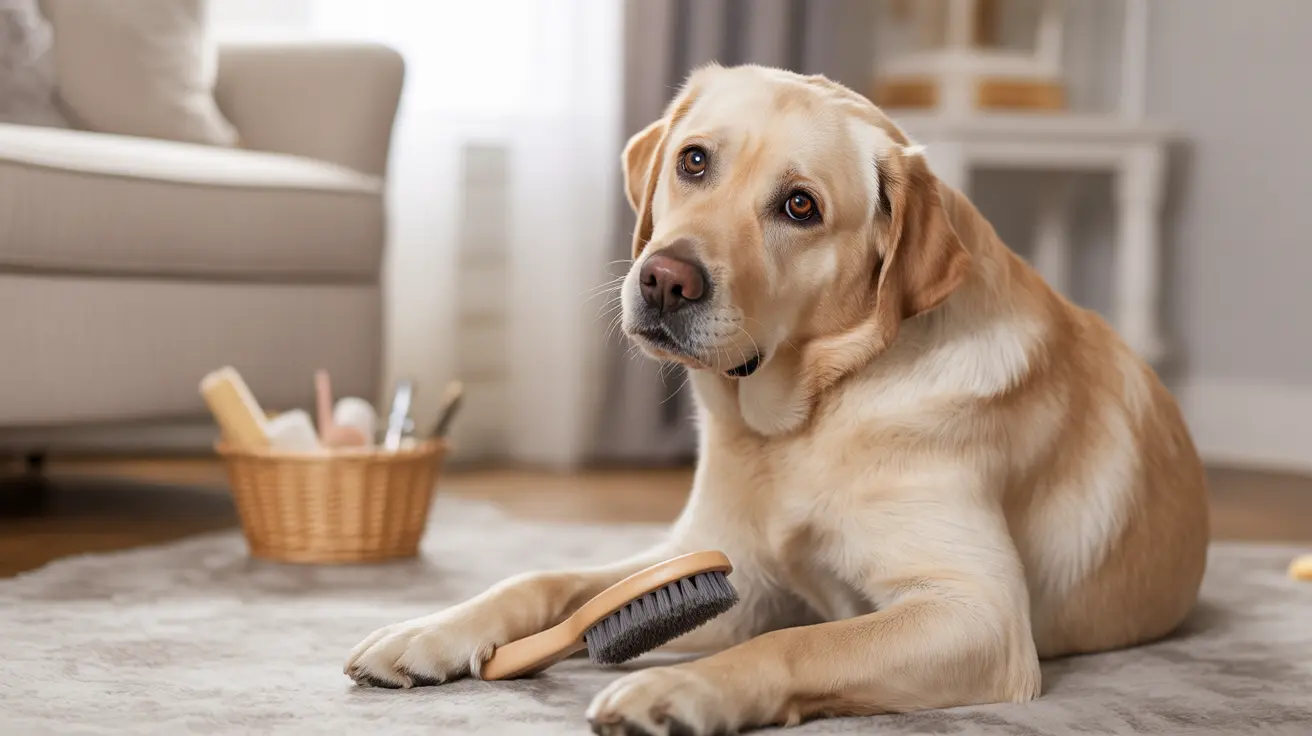Labrador Retrievers are beloved family dogs known for their friendly personalities and intelligence. However, one aspect that often surprises new owners is their significant shedding. If you're wondering how much Labs shed, the answer is: quite a lot. These popular dogs are heavy shedders year-round, with intense seasonal shedding periods that can test even the most dedicated pet parents.
Understanding Labrador shedding patterns and knowing how to manage them effectively can make living with these wonderful companions much more enjoyable. Let's dive into everything you need to know about Labrador shedding, from what to expect to how to keep it under control.
Understanding the Labrador's Double Coat
Labradors have a distinctive double coat consisting of a dense, soft undercoat and a water-resistant outer layer. This specialized coat structure serves an important purpose, protecting Labs during water activities and helping them regulate their body temperature. However, it's also the primary reason for their substantial shedding.
Year-Round vs. Seasonal Shedding
Labs shed consistently throughout the year, but they experience two major seasonal shedding periods known as "blowing coat." These typically occur in spring and fall, when your Lab will shed their undercoat to prepare for the upcoming season.
During these peak shedding periods, which can last several weeks, you might find yourself dealing with what seems like endless amounts of fur. Many Lab owners report collecting enough loose fur daily to make a small puppy!
Factors That Influence Shedding
Health and Nutrition
A Lab's shedding can be significantly affected by their overall health and diet. Poor nutrition, stress, or underlying health issues can lead to excessive shedding. Ensuring your Lab receives a balanced diet rich in essential fatty acids can help maintain a healthy coat and minimize unnecessary shedding.
Environmental Factors
Indoor temperature, humidity levels, and exposure to artificial lighting can impact how much your Lab sheds. Dogs living primarily indoors may experience less dramatic seasonal shedding patterns compared to those spending more time outside.
Managing Your Lab's Shedding
Regular Grooming
The most effective way to control Lab shedding is through consistent grooming. Daily brushing during shedding seasons and 2-3 times weekly during regular periods can significantly reduce the amount of fur around your home. Using appropriate tools like undercoat rakes and deshedding brushes makes the process more effective.
Home Management Strategies
Investing in a good vacuum cleaner designed for pet hair is essential. Consider using washable slipcovers on furniture and keeping a lint roller handy. Some Lab owners find success with air purifiers to help capture airborne fur.
When to Be Concerned
While heavy shedding is normal for Labs, certain signs warrant veterinary attention. Watch for bald patches, skin irritation, or unusually excessive shedding outside seasonal changes. These could indicate underlying health issues that need addressing.
Frequently Asked Questions
How much do Labrador Retrievers shed throughout the year and during peak seasons?
Labradors shed moderately throughout the year and heavily during spring and fall. During peak shedding seasons, they can lose up to 30-40 grams of fur daily, while maintaining a steady but lesser amount of shedding during other months.
What causes the heavy seasonal shedding, or "blowing coat," in Labs during spring and fall?
Seasonal shedding is triggered by changes in daylight hours and temperature. Spring shedding helps Labs lose their heavy winter coat, while fall shedding prepares them for growing a thicker winter coat.
How can I effectively manage and reduce my Labrador's shedding at home?
Regular brushing (daily during shedding seasons), proper nutrition, and maintaining a consistent grooming routine are key. Using appropriate grooming tools, keeping up with regular vacuuming, and ensuring proper diet all help manage shedding effectively.
When is Labrador shedding a sign of a health problem rather than normal fur loss?
Abnormal shedding patterns, patchy hair loss, skin irritation, or excessive shedding outside seasonal changes may indicate health issues. If you notice these signs or any unusual changes in your Lab's coat, consult a veterinarian.
Does a Labrador's coat color affect how much they shed or how visible the shedding is?
The amount of shedding is not affected by coat color. However, the visibility of shed fur varies - yellow Lab fur might be more noticeable on dark surfaces, while black Lab fur shows more on light-colored furnishings.






